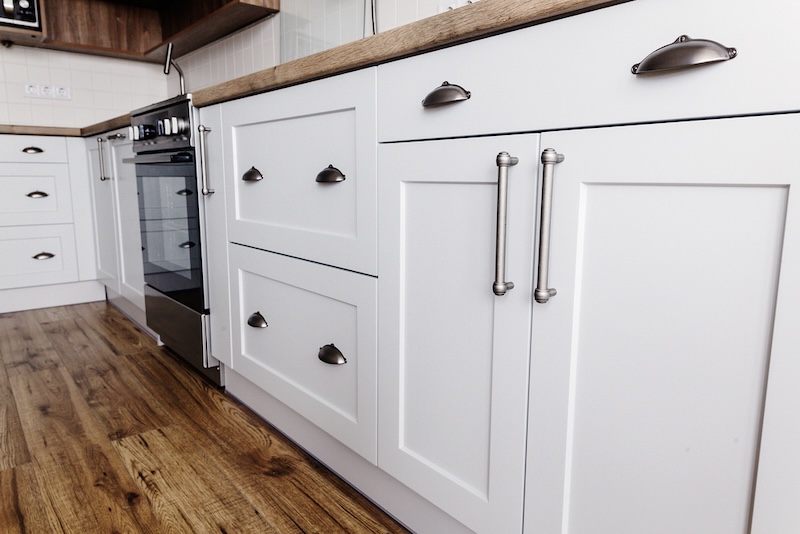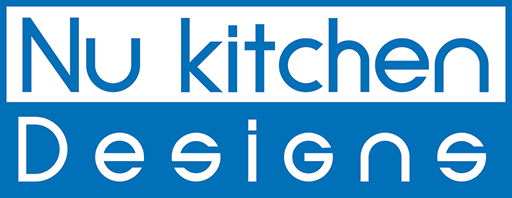Choosing kitchen cabinets might feel straightforward—until you discover the variety of styles available. One popular but often confusing option is overlay cabinets.
Many homeowners feel overwhelmed deciding between partial and full overlay styles because each offers a distinct look and function. Picking the wrong type could leave you unhappy with your kitchen’s appearance, frustrated by limited accessibility, or regretful about overspending.
Understanding the differences clearly helps prevent these costly mistakes. Whether you’re aiming for traditional charm or a sleek, modern feel, knowing how each overlay style affects your kitchen’s aesthetic and functionality is key.
Here’s an easy-to-follow breakdown of partial vs. full overlay cabinets, helping you confidently choose the right cabinet style for your home, your budget, and your lifestyle.
Table of Contents
ToggleWhat Are Overlay Cabinets?
Overlay cabinets are cabinets where the cabinet doors sit on top of the cabinet frame, covering part or nearly all of it. They’re popular in modern kitchens because they give a cleaner look compared to cabinets with fully exposed frames.
Unlike inset doors, which sit flush inside the frame, overlay doors rest on top of it. This small detail impacts your kitchen’s overall appearance and even its usability. With overlay cabinets, hinges remain hidden behind the doors, creating smooth, continuous lines.
You can choose between partial overlay cabinets, leaving the cabinet face frame visible around the edges, or full overlay cabinets, where the door covers nearly the entire face frame. Understanding the differences between full overlay vs partial overlay cabinets helps you pick the right style for your kitchen remodel.
Understanding Partial Overlay Cabinets
If you’re considering partial overlay cabinets, it helps to understand exactly what they offer. Partial overlay cabinets have doors that only partially cover the cabinet face frame, leaving parts of the frame visible between doors and drawers. This gives your kitchen a classic, traditional feel that’s popular in many homes today.
One advantage of choosing partial overlays is the cost. These cabinets are budget-friendly because they require fewer precise measurements during installation. You don’t need exact spacing, making the setup quicker and simpler. Additionally, they’re ideal if you prefer a more relaxed, timeless kitchen style over ultra-modern aesthetics.
Pros:
- Budget-friendly
- Easier installation
- Traditional style appeal
Cons:
- Less sleek, modern appearance
- Visible gaps between doors
Understanding Full Overlay Cabinets
On the other hand, full overlay cabinets offer a completely different look and feel. With full overlay styles, your cabinet door covers nearly the entire cabinet frame, leaving minimal space visible. This creates a sleek, contemporary appearance popular in modern and transitional styles.
Full overlay cabinets offer more than just aesthetics—they make accessing your cabinets easier, offering slightly more storage and usability. Premium designs often include concealed hinges, giving a polished look that many homeowners prefer.
However, installing full overlay cabinets needs careful, precise measurements. Professional installation ensures perfect alignment of doors and drawers, so expect slightly higher upfront costs.
Pros:
- Modern, streamlined appearance
- More storage accessibility
- High-end, custom look
Cons:
- Higher initial cost
- Requires precise professional installation
Cost Comparison: Partial vs. Full Overlay Cabinets
Now that you understand the styles of full overlay and partial overlay cabinets, let’s look at costs realistically. If budget matters most, partial overlay cabinets usually cost less. They’re simpler to install because less precision is needed to line up doors perfectly with the cabinet frame.
In contrast, full overlay cabinets give your kitchen cabinets a sleek, custom cabinet look. However, their price is higher, partly because they require exact measurements and careful installation to fit neatly without gaps. Yet, many homeowners view full overlay cabinets as a better long-term investment, especially if modern appeal and resale value are a priority.
Cost Factor | Partial Overlay Cabinets | Full Overlay Cabinets |
Cabinet Price | Generally lower | Usually higher |
Installation Cost | More affordable | Higher due to precision |
Overall Value | Good value for traditional kitchens | Better long-term investment, higher-end look |
Which Overlay Cabinet Style Fits Your Kitchen?
Choosing the right overlay cabinets depends on your kitchen style, budget, and personal taste. Partial overlay cabinets fit best if you’re creating a traditional kitchen and prefer a cozy, classic look. They’re also ideal if you’re budget-conscious, giving you an attractive result without high costs.
On the other hand, full overlay cabinets suit modern, sleek kitchens perfectly. If you’re a homeowner focused on aesthetics and practical functionality, full overlays give your space a premium, custom feel, even making it appear more spacious.
Cabinet Style | Ideal Scenario |
Partial Overlay | Traditional kitchens, budget-conscious remodelers |
Full Overlay | Modern kitchens, homeowners prioritizing style and functionality |
Common Mistakes When Choosing Cabinet Styles
When selecting cabinet overlays, full overlay vs partial, it’s easy to overlook crucial details. Avoiding these common pitfalls ensures your kitchen upgrade meets your expectations:
- Mismatching Styles: Mixing too many cabinet styles or finishes creates visual clutter and reduces your kitchen’s appeal.
- Ignoring Functionality: Beautiful cabinets aren’t useful if they’re hard to access. Prioritize ease of use alongside looks.
- Underestimating Costs: Remember, professional installation, certifications like ICC ES certification or CARB2 compliant certification, and premium materials add to the budget.
Always balance practicality and aesthetics equally. Experienced kitchen remodelers and professional cabinet makers can offer valuable guidance, ensuring your choice enhances both style and function for years.
Professional Installation Matters
Now that you have a clearer understanding of cabinet overlays—full, partial, and inset—remember that choosing the right style is only the first step.
Professional installation plays a huge role in how your cabinets look and perform over time. Expert installers provide precise alignment, ensuring doors and drawers open smoothly and look seamless. Proper alignment helps your cabinets last longer because it reduces wear on hinges and cabinet frames.
Additionally, many professional installers offer warranty coverage, protecting your investment. While frameless cabinets and full overlay styles especially benefit from careful installation, all cabinets look and function better when expertly installed.
Making Your Cabinet Choice Easier

Choosing between partial and full overlay cabinets ultimately comes down to your kitchen’s goals, style preferences, and budget. Partial overlay cabinets save money and suit traditional designs, leaving part of the cabinet frame visible. Full overlay cabinets provide a sleek, modern appearance with minimal visible frames, offering a custom look ideal for contemporary kitchens.
Making an informed choice means considering your kitchen’s overall style, function, and value. To simplify the process, professional advice can make a real difference. Nu Kitchen Designs specializes in helping homeowners choose the perfect cabinet overlays—full, partial, and inset—for their kitchens. With expert guidance and quality installation, your cabinets will perfectly match your vision and last for years.


